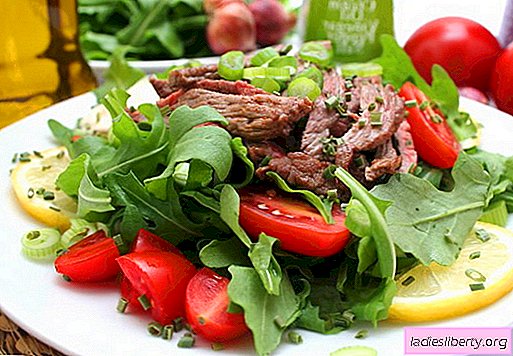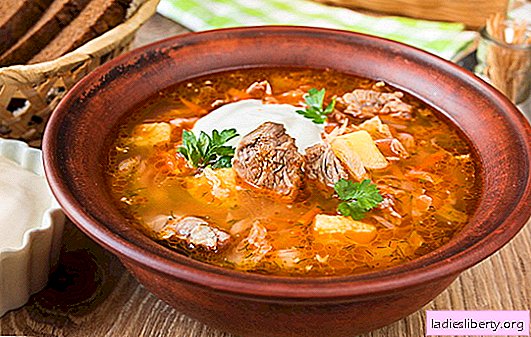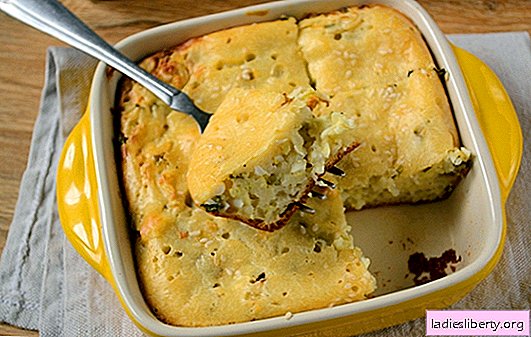
Euphorbia is one of the most effective medicinal and at the same time poisonous plants. The benefits and harms of milkweed are a load on two opposite scales, but if you use milkweed with accuracy and knowledge, the benefits will definitely outweigh.
Endless euphorbia - the benefits for homeopathy and not only
The numerous genus of euphorbia has more than one and a half thousand species, although some botanists are inclined to believe in its number in two thousand species.
Euphorbia - a diverse plant. These are grasses, shrubs and trees, sometimes so dissimilar that without specific knowledge you will not guess about their relationship.
Unremarkable representatives of the world of flora, weeds of vegetable gardens, melliferous plants, decorative inhabitants of gardens. And finally and first of all - medicinal plants.
As such, a number of species of milkweed was known in the Ancient World in all the lands where it only grew. His scientific name is euphorbia, he is obliged to the doctor Euphorb, who served at the court of the king of Numidia and described the properties of milkweed in 54 BC. e. Modern medicine confirms the fidelity of some recipes of ancient herbalists, supplements them with new knowledge about milkweed, but also tirelessly warns homeopathic fans from dangerous mistakes.
The fact is that the euphorbia got its name from the milky juice in the stems and leaves, milk-white and extremely poisonous.
But, as you know, snake venom can be useful if you know the recipes and observe the measure.
Milkweed treatment is permissible only with complete confidence in the correctness of a particular choice. Specialist consultation and strict adherence to the instructions for the manufacture and / or use of medicines based on it is necessary.
They come in the form of ointments, alcohol tinctures, dried herbs or roots for the preparation of infusions.
Almost all parts of the plant are collected for them - the tops with inflorescences, stems and leaves (but the seeds are useless), as well as the roots. Euphorbia is collected in the wild and created by artificial planting.
The unique benefit of milkweed indirectly and to a large extent comes from its powerful ramified root system, sometimes going to the ground to a depth of 10 meters, from where the plant extracts clean water and specially formed mineral substances.
In which cases can benefit from milkweed
It is noteworthy that the chemical composition of milkweed is still not fully understood, which, however, does not interfere with the diverse use of its beneficial properties.
Much covers the external use of funds in the field of skin diseases. Thanks to antiseptic and anti-inflammatory properties, euphorbia is effective in:
· Insect bites and painful animal bites;
Scabies
Ulcers;
Fungal diseases (not only skin, but also nails).
Also, euphorbia is able to reduce warts and age spots.
In relation to the gastrointestinal tract, euphorbia acts as a laxative and a means of preventing and treating various diseases, including dysbiosis, hemorrhoids and gastric ulcer.
Also, among the properties of milkweed can be noted its benefits for:
· Treatment of diseases of the bladder and kidneys (as a diuretic);
Improvement of the upper respiratory tract;
· Strengthening the walls of blood vessels (due to the high content of selenium).
One of the popular names for milkweed - the root man, comes from its effectiveness in the treatment of diseases in the field of intimate health, accompanied by a violation of erectile function.
Regular administration of drugs from milkweed is manifested by a rejuvenating and tonic effect, the disappearance of headaches, provoked by overwork and stress.
Recently, there has been data on the effectiveness of milkweed against oncological diseases - its ability, through the bloodstream, to deliver to the localization sites metastases of substances that block their growth. However, this information has not received unequivocal confirmation of the world scientific community.
On the benefits of milkweed as a honey plant
An unusual aroma and taste with a light bitterness and astringency, honey collected by bees from milkweed is the only safe remedy from this plant, the use of which is practically in no way able to harm a person.
Euphorbia honey is dark brown, has a liquid consistency and does not sugar for a long time. Having tried it once - it can no longer be confused with any other honey.
The specific taste of honey is due to the high iodine content, the importance of which for human health cannot be overestimated by iodine, in particular:
· Serves as the foundation for thyroid health;
· Strengthens the nervous system;
· Participates in hematopoiesis and increases hemoglobin level;
· Positively affects mental abilities and other functions of the brain.
Euphorbia honey with its complex of biologically active substances is able to replace some simple complex recommended for vitamin deficiency.
It is also useful for:
Cardiovascular system, including the prevention of varicose veins;
· Prevention of liver disease;
Relief of symptoms of rheumatism;
· Improving the condition of the skin, nails and hair.
To take this honey is not more difficult than any other. For example, from insomnia you can dilute a spoonful of sweets in milk. Or use it with herbal tea (dogrose, fireweed) to strengthen immunity and improve metabolism.
Juice of black radish with honey is a folk remedy for cough, tormenting with a cold.
Outwardly, honey is used, in particular, in applications for wound healing.
What is the harm of milkweed
The concentration of harm in milkweed is its milky juice, poisonous not only for humans, but for most animals. Livestock, however, and almost all wild animals and birds, on an instinctive level stay away from milkweed.
But pets, especially curious cats, are not so circumspect, so euphorbia is not recommended to be bred on the windowsill if cats live nearby.
It is not necessary to break the stems of a plant in order to sprinkle the juice - with many types of plants it’s enough, say, to touch the leaves, rub the stem and then touch your fingers with your fingers to provide yourself with painful sensations and a lot of risks of blurred vision.
Upon contact with the skin or mucous membranes, milk milk juice causes burns, redness, inflammation and often an allergic reaction that spans the entire body.
Incorrect intake of milk for oral administration as a medicine is fraught with gastrointestinal tract disorders, including vomiting and diarrhea, as well as general deterioration of health, convulsions, sensation of suffocation, impaired metabolism and the functioning of individual organs.
The list of health threats can be continued for a long time, but it is better to emphasize again - treatment with milk is acceptable only with the knowledge, and sometimes under the supervision of the appropriate specialist, and it is undesirable for them to be just a traditional healer, and not a professional doctor.
Euphorbia honey, as already mentioned, is practically harmless, but it is not recommended for people with individual intolerance or contraindication to honey in principle, as well as for those who are diagnosed with an excess of iodine in the body.











